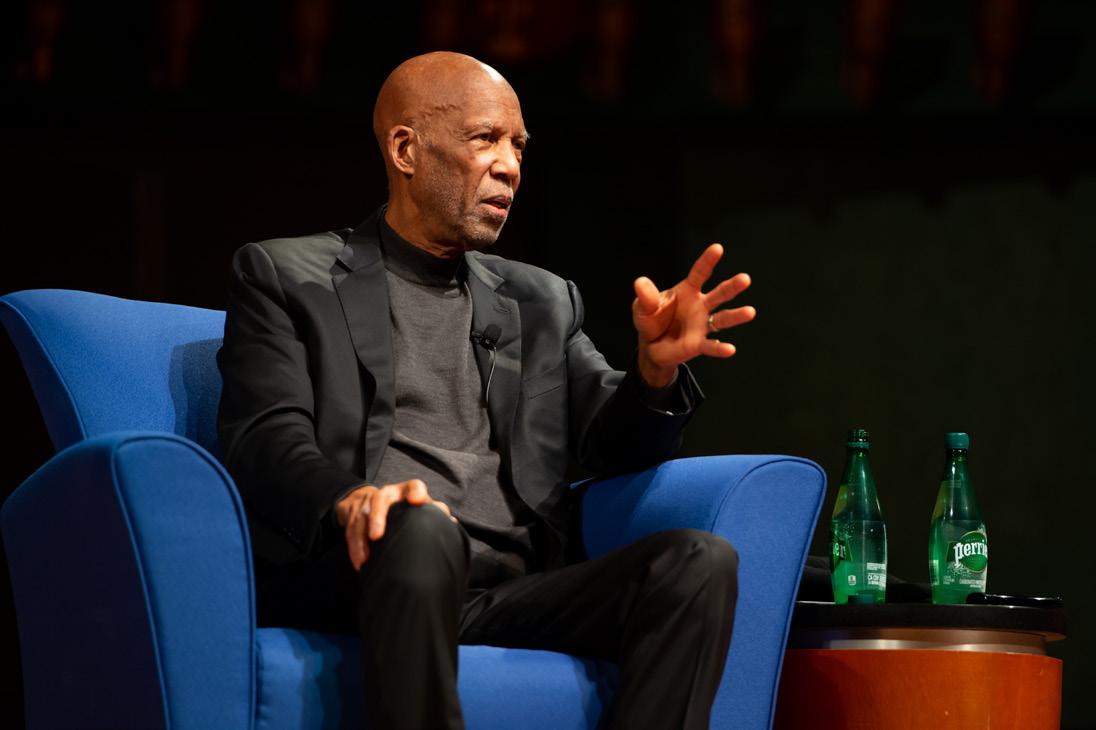
3 minute read
FOR THE ARTS
hen the former Rockport Center for the Arts (RCA) location was gutted in the midst of Hurricane Harvey’s destructive path, everything changed, and the center’s upcoming plans were threatened. However, the destruction was no match for passiondriven Executive Director Luis Purón, who was prepared to launch a plan and make sure the show went on.
“What is happening with the arts in Rockport is so significant, and we’re a big part of it,” said Purón. “We’re at the center of everything that has to do with the community, and I knew things couldn’t stop running just because the building was gone.”
While searching for a way to keep the center’s presence and programming running, Purón was provided with office space so he and his staff could operate out of Corpus Christi. The Art Museum of South Texas also canceled a show in one of its spaces to allow the RCA to bring in its important “Birds of Art” exhibit from the Lee Yawkey Woodson Art Museum in Wasau, Wisconsin. This helped the RCA stay in business while still holding its workshops, classes, exhibits and children’s programs.
Then, taking inspiration from the group of artists who formed the Art Association in 1969, Purón set out to fulfill their vision of having a center for the arts that encompassed multiple art disciplines — beyond just the visual arts. He decided there was no time like the present to create a community-driven gathering place where people can enjoy a variety of art activities and art education.
The new 1.2-acre RCA campus includes a two-story, 14,000-squarefoot visual arts and education building, including five classrooms to facilitate the expanded schedule that will now provide hands-on classes and workshops designed for all levels of ability including painting, drawing, jewelry, photography, mixed-media, sculpture and new media.
This $12.5 million campus is not only a testament to this vision, but also the first original facility to be built for the non-profit arts organization in its 53-year history. It is located a few yards from Aransas Bay in the heart of downtown Rockport, and is ready to welcome the arts community back.
Process And Planning
When he first pursued the job of executive director, Purón had a major goal in mind: to be the one who executed the expansion plan that was already in place, prior to Hurricane Harvey. The center had outgrown its facility and there was a $3-4 million capital project in mind. But after the storm, the center would require a complete rebuild.
Considering the undertaking ahead of them, Purón said, “We didn’t know how successful we’d be with fundraising, and we didn’t know at the time that the federal government was going to bring in disaster recovery funding through the Economic Development Administration (EDA).” purest color light and the most used for making art,” said David. Elizabeth added, “Also, being in a coastal environment makes you want to enjoy the outdoors, and the windows allow guests to engage with the outdoor environment while being indoors.”
Reports of the hurricane and its destruction filled news and media outlets, making this a national news story and putting Rockport on the map. Since the RCA already had land in the downtown Rockport area, it qualified for the EDA grant.
Mary Hime, Imagine Capital Campaign Chair, ran the campaign in 2017 that was responsible for raising funds to match the EDA grant to build the new RCA. She worked closely with Purón to raise the funds from local supporters and generous organizations outside the Coastal Bend. With funding in place, RCA was one step closer to its dream of a new home.

While the light creates an inviting indoor/outdoor sense for the center, the building is situated against the sidewalk, making it an extension of Austin Street. This element highlights the vibrancy and life of the shops, restaurants and pedestrian life on Austin Street, revitalizing the entire area.
No art building is complete without materials used in an creative fashion. The clapboard siding used on the building nods to the traditional coastal environment, but the planks create a shadow line that’s bolder and more monumental than a typical clapboard building. Adding to the artistic element of the building is the Kelly and Scott Biar Terrace, a 450-square-foot rooftop terrace with views of the bay and Sculpture Garden below, and the Meadows Foundation Loggia, a wraparound porch connecting the entire building.









